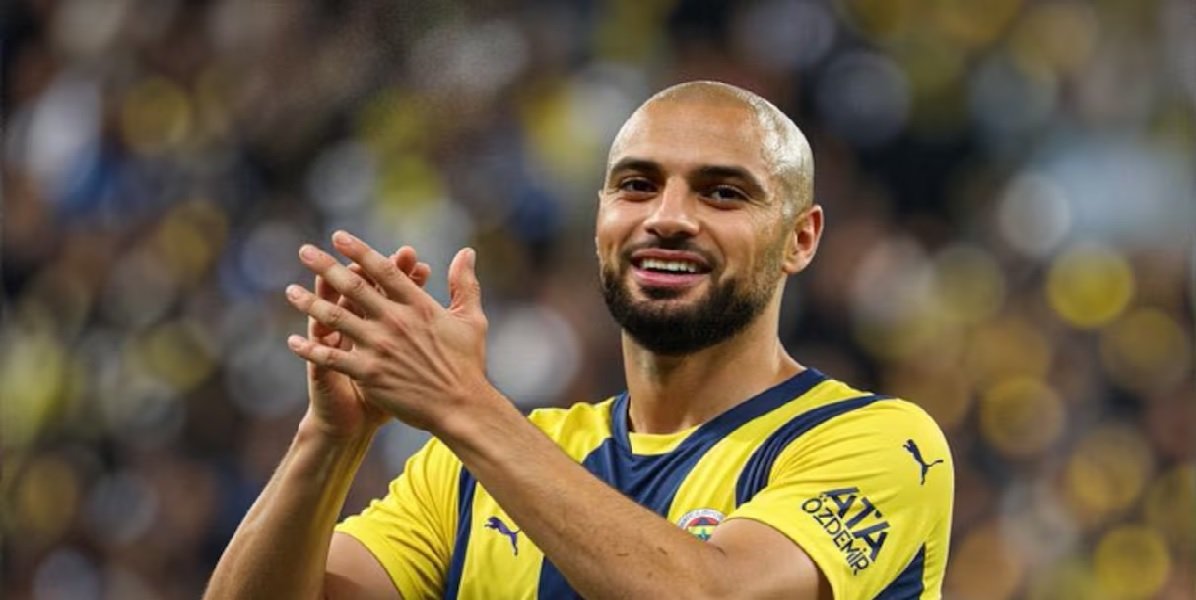Rhythmic Gymnastics, a captivating and graceful discipline, stands apart within the realm of gymnastics with its unique emphasis on artistry, expression, and the skillful manipulation of hand-held apparatus. Often described as a blend of dance, ballet, and gymnastics, it demands exceptional flexibility, coordination, musicality, and a profound connection between the gymnast and their chosen implement. This article delves into the intricate world of Rhythmic Gymnastics, exploring its history, the diverse apparatus employed, the nuanced scoring system, the demanding training regimes, and the undeniable allure of this mesmerizing athletic art form.
Rhythmic Gymnastics: A Historical Tapestry
The origins of Rhythmic Gymnastics can be traced back to the late 19th and early 20th centuries, emerging from a desire to incorporate more expressive and artistic movement into traditional gymnastics. Influences from ballet, Dalcroze eurhythmics (a system of musical education through movement), and various forms of expressive dance contributed to its development. Early pioneers, primarily in Europe, experimented with exercises performed to music, often utilizing simple props like scarves and hoops.
The formalization of Rhythmic Gymnastics as a distinct sport began to take shape in the mid-20th century. The Fédération Internationale de Gymnastique (FIG) officially recognized Rhythmic Gymnastics in 1963, and the first World Championships were held in 1963 for individual routines and in 1967 for group routines. It made its debut as an Olympic sport at the 1984 Los Angeles Games for individual events, with the group event being added in 1996. Since then, Rhythmic Gymnastics has grown into a globally recognized and celebrated sport, captivating audiences with its elegance and dynamism.
The Five Enchanting Apparatus:
A defining characteristic of Rhythmic Gymnastics is the gymnast’s interaction with five distinct hand-held apparatus, each demanding unique skills and contributing to the overall artistic impression of the routine:
- Rope: The rope, typically made of hemp or synthetic material with knots at the ends, emphasizes jumps, leaps, swings, throws, and catches. Gymnasts must demonstrate coordination and control while manipulating the rope around their body and through the air, creating dynamic patterns and showcasing flexibility through intricate knots and wraps.
- Hoop: Usually made of plastic or wood, the hoop is used for rotations around the hand, body, and floor, as well as throws and catches. Gymnasts must demonstrate skillful manipulation of the hoop, creating flowing movements and incorporating it seamlessly into their bodywork. The size of the hoop is relative to the gymnast’s height, adding a personal element to its use.
- Ball: Made of rubber or synthetic material, the ball emphasizes rolling, bouncing, throwing, and catching. Unlike the other apparatus, the ball should not be held or gripped tightly, requiring a soft and continuous connection with the gymnast’s body. Fluidity and control are paramount, with gymnasts showcasing their ability to manipulate the ball across their body and in the air with grace.
- Clubs: Resembling bowling pins, the clubs are typically made of wood or synthetic material. Routines with clubs involve rhythmic swings, circles, throws, and catches, often performed with both clubs simultaneously or in alternating patterns. This apparatus demands exceptional hand-eye coordination, precision, and a strong sense of rhythm.
- Ribbon: The ribbon, a long satin or other non-elastic material attached to a stick, creates flowing patterns, spirals, throws, and catches. Gymnasts must demonstrate artistry and control as they manipulate the ribbon through space, creating visually stunning designs. The length of the ribbon and the skill in preventing knots are crucial aspects of the routine.
The Nuances of Scoring:

The scoring system in Rhythmic Gymnastics, similar to Artistic Gymnastics, evaluates both the technical difficulty and the artistic execution of the routines. Judges assess the gymnasts based on a “Difficulty” score (D-score) and an “Artistry” or “Execution” score (A/E-score).
- Difficulty Score (D-score): This score is determined by the variety and complexity of the body movements (jumps, balances, pivots, flexibility and wave movements) and the apparatus handling techniques incorporated into the routine, as outlined in the FIG Code of Points. Specific combinations and innovative elements contribute to a higher D-score.
- Artistry/Execution Score (A/E-score): This score evaluates the artistic merit, musicality, choreography, and the technical execution of the movements. Judges assess the gymnast’s expression, rhythm, coordination between body and apparatus, spatial awareness, and the overall flow and coherence of the routine. Deductions are taken for technical errors, lack of artistry, and poor synchronization with the music.
The final score for a routine is the sum of the D-score and the A/E-score (D + A/E). In group routines (comprising five gymnasts), the synchronization, teamwork, and the complexity of the apparatus exchanges are also key elements in the scoring.
The Demanding Path of Training:

Becoming a proficient Rhythmic Gymnast demands years of rigorous and dedicated training, often beginning at a young age. The training regimen focuses on developing a unique combination of physical and artistic attributes:
- Flexibility: Exceptional flexibility is crucial for achieving the required body movements, such as splits, backbends, and intricate balances. Extensive stretching and flexibility exercises are a cornerstone of training.
- Coordination: Highly developed hand-eye coordination and body awareness are essential for the skillful manipulation of the apparatus while simultaneously executing complex body movements.
- Strength and Stamina: While appearing graceful, Rhythmic Gymnastics requires significant core strength, leg power for jumps and leaps, and stamina to maintain energy and precision throughout the routine.
- Musicality and Rhythm: Gymnasts must develop a deep understanding of music and rhythm to synchronize their movements and apparatus handling with the musical accompaniment.
- Artistic Expression: Training includes developing the ability to convey emotions, tell a story, and connect with the audience through movement and facial expressions.
- Apparatus Technique: Hours are dedicated to mastering the specific techniques for each of the five apparatus, including throws, catches, rotations, and manipulations.
Coaches play a vital role in guiding gymnasts through this demanding training, providing technical instruction, choreographing routines, and nurturing the artistic development of their athletes.
The Allure of Rhythmic Gymnastics:

Rhythmic Gymnastics holds a unique appeal due to its captivating blend of athleticism and artistry. The seamless integration of graceful movement with the skillful handling of the apparatus creates a mesmerizing spectacle. The beauty and fluidity of the routines, combined with the evident physical prowess of the gymnasts, captivate audiences worldwide.
The sport celebrates individuality and artistic expression, allowing gymnasts to interpret music and convey emotions through their movements. The dynamic interplay between the gymnast, the apparatus, and the music creates a powerful and engaging performance. The challenge of mastering both the technical difficulty and the artistic interpretation makes Rhythmic Gymnastics a truly demanding and rewarding discipline.
The Evolution of Rhythmic Gymnastics:
Like Artistic Gymnastics, Rhythmic Gymnastics has witnessed a continuous evolution in the complexity and innovation of routines. Gymnasts and coaches constantly explore new ways to manipulate the apparatus and incorporate increasingly difficult body movements. The FIG Code of Points encourages this evolution while ensuring the safety and artistic integrity of the sport.
The integration of diverse musical styles and choreographic influences has also enriched Rhythmic Gymnastics, making it a dynamic and ever-changing art form. Gymnasts often draw inspiration from various dance genres and cultural traditions, adding unique flavors to their performances.
The Global Stage:
Rhythmic Gymnastics boasts a vibrant international community, with talented gymnasts emerging from numerous countries across the globe. The World Championships and the Olympic Games serve as the pinnacle of competition, showcasing the highest level of skill and artistry. The diverse styles and strengths of different national schools contribute to the richness and global appeal of the sport.
The Mental Fortitude:
Beyond the physical and artistic demands, Rhythmic Gymnastics requires significant mental strength. Gymnasts must possess exceptional focus, concentration, and the ability to perform intricate routines flawlessly under pressure. The memorization of complex sequences and the ability to maintain composure during competition are crucial aspects of mental training.
The Future of Rhythmic Gymnastics:
The future of Rhythmic Gymnastics promises continued growth and innovation. The increasing global interest in the sport, coupled with advancements in training techniques and choreography, will likely lead to even more breathtaking and creative performances. The emphasis on both technical difficulty and artistic expression will continue to shape the evolution of the discipline, ensuring its enduring appeal as a captivating athletic art form.
The Synergy Between Music and Movement:
A defining characteristic of Rhythmic Gymnastics is the integral relationship between the gymnast’s movements and the musical accompaniment. The music serves not merely as background but as an essential partner in the performance, dictating the rhythm, tempo, and emotional tone of the routine. Gymnasts meticulously choreograph their movements to align with the nuances of the music, creating a seamless and expressive whole. The choice of music is often a personal one, allowing gymnasts to showcase their individual style and artistic interpretation. The synergy between music and movement elevates Rhythmic Gymnastics beyond mere athleticism, transforming it into a captivating performance art.
The Importance of Choreography:
Choreography plays a pivotal role in Rhythmic Gymnastics, serving as the framework that weaves together the technical skills and artistic expression. A well-crafted choreography showcases the gymnast’s strengths, highlights the unique qualities of the chosen apparatus, and effectively interprets the music. It involves thoughtful transitions between movements, dynamic changes in tempo and intensity, and the creative use of space. The choreographer, often working closely with the gymnast and coach, aims to create a routine that is both technically challenging and visually captivating, leaving a lasting impression on the judges and the audience.
Group Rhythmic Gymnastics: Harmony in Unity:
The group event in Rhythmic Gymnastics adds another layer of complexity and artistry to the discipline. A team of five gymnasts performs synchronized routines, often involving intricate apparatus exchanges and collaborative movements. Group routines demand exceptional teamwork, precise timing, and a deep understanding of each other’s movements. The visual impact of five gymnasts moving in perfect unison, seamlessly passing and catching apparatus, is truly breathtaking. The choreography in group routines must be innovative and dynamic, showcasing the collective skill and artistry of the team.
The Pathway to Elite Performance:
The journey to becoming an elite Rhythmic Gymnast is a long and demanding one, requiring unwavering dedication, discipline, and the support of dedicated coaches and families. Young gymnasts typically begin with fundamental movement training, developing flexibility, coordination, and basic apparatus skills. As they progress, the intensity and specialization of their training increase, often involving training camps, national and international competitions, and a significant time commitment. The pathway to elite performance requires not only exceptional physical talent but also a strong work ethic, mental resilience, and a genuine passion for the sport.
The Role of the Coach:
The coach plays a multifaceted role in the development of a Rhythmic Gymnast. They are not only instructors of technical skills but also mentors, choreographers, and sources of motivation and support. Coaches develop individualized training plans, guide the gymnast through the complexities of the Code of Points, and help them cultivate their artistic expression. The coach-athlete relationship is often a close and enduring one, built on trust, mutual respect, and a shared commitment to achieving the gymnast’s full potential.
The Impact of Injury Prevention and Recovery:
Due to the demanding nature of the sport, injury prevention and effective recovery strategies are crucial for the longevity and success of Rhythmic Gymnasts. Training programs incorporate specific exercises to strengthen supporting muscles, improve joint stability, and enhance body awareness. Proper warm-up and cool-down routines, as well as access to qualified medical professionals, are essential. Recognizing the signs of overtraining and implementing appropriate recovery protocols are vital for maintaining the health and well-being of the athletes.
The Cultural Significance of Rhythmic Gymnastics:
In many parts of the world, Rhythmic Gymnastics holds significant cultural importance, often admired for its grace, beauty, and the dedication of its athletes. National traditions and artistic influences can be seen in the music and choreography of routines, reflecting the unique cultural heritage of different countries. The sport often serves as a source of national pride, with successful gymnasts becoming role models and inspiring young people to pursue their athletic dreams.
The Intersection of Sport and Art:
Rhythmic Gymnastics stands at the fascinating intersection of sport and art. While demanding immense physical prowess and technical precision, it also places a strong emphasis on artistic interpretation, musicality, and expressive movement. The gymnast is not just an athlete but also a performer, using their body and the apparatus to create a captivating narrative. This unique blend of athleticism and artistry is what sets Rhythmic Gymnastics apart and contributes to its enduring appeal.
The Future Landscape:
The future of Rhythmic Gymnastics is likely to see continued innovation in both technical difficulty and artistic expression. The ongoing evolution of the Code of Points will continue to shape the development of new skills and choreographic trends. The increasing global reach of the sport, facilitated by media coverage and online platforms, will likely inspire greater participation and a wider appreciation for its unique beauty and athleticism. The focus on athlete well-being and ethical training practices will also play an increasingly important role in shaping the future of the discipline, ensuring a positive and sustainable environment for athletes to thrive.
Conclusion:
Rhythmic Gymnastics is a mesmerizing and multifaceted discipline that captivates with its elegance, dynamism, and the harmonious interplay between the gymnast and their apparatus. It demands a rare combination of exceptional physical abilities, technical mastery, profound musicality, and compelling artistic expression. The journey of a Rhythmic Gymnast is one of dedication, discipline, and a relentless pursuit of both athletic and artistic excellence. As the sport continues to evolve and inspire, its unique blend of strength and grace will undoubtedly continue to enchant audiences worldwide, solidifying its place as a cherished and celebrated art form within the global sporting community. The rhythmic dance of the gymnast and their apparatus is a powerful testament to the beauty and potential of human movement.










